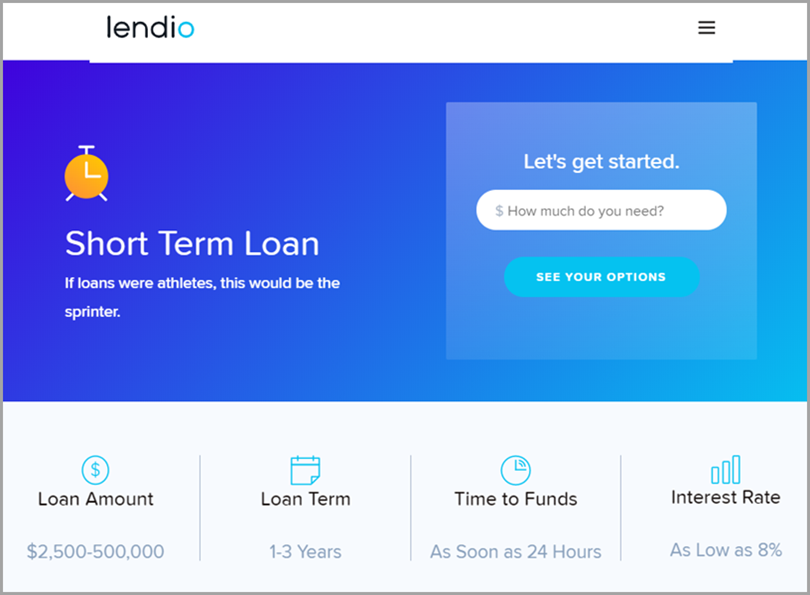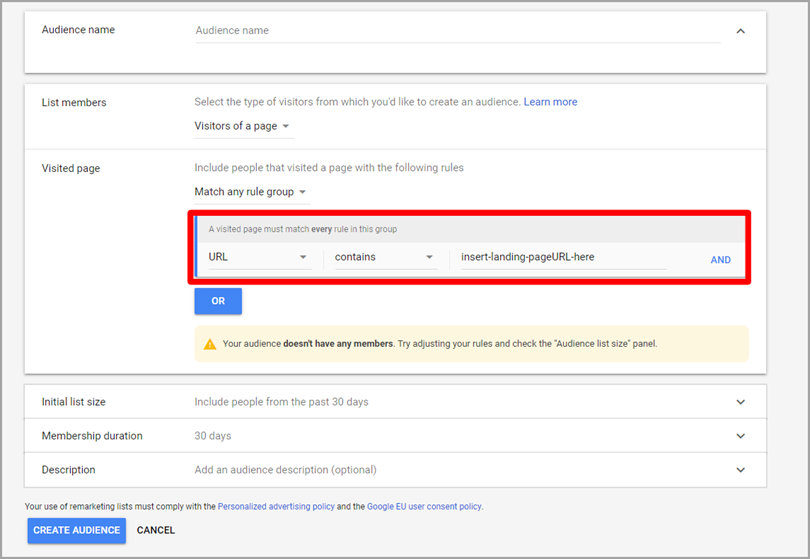
Brands and businesses across the Globe look to channelize all their marketing, promotional, and operational endeavors to attain one long-term vision…
To generate an influx of revenue that is well and truly more than the year gone by.
Right at the epicenter of this vision lays the trump-card that more often than not helps brands acquire the revenue they are after. They are popularly known as the customers, and it’s imperative that they are treated well.
Now it’s one thing having existing customers, but something else to keep them around for the longest time to come. And then there is the whole proposition of acquiring new ones altogether. While it’s comparatively more expensive for a brand to achieve the latter, it is just as important.
It’s a hi-tech and competitive world today. Innovation is more than a buzzword and innovators are aplenty. Needless to say, customers have an open buffet of options (brands) to choose from, making them the proverbial boss.
No matter how much attachment one has to a brand, it doesn’t take much to shift base these days. If anything, brands need to work in overdrive to ensure that their existing customers stay loyal to them for as long as possible, and the new ones turn loyal in a jiffy. Brands must master the art of customer loyalty management.
What is customer loyalty and how do you go about building it?
“A customer can be termed as loyal when one makes a voluntary choice of buying from or being associated with a particular brand over a period of time, resulting from the cohesive experience (physical and emotional) that they have had in the past with the brand.”
It has to be kept in mind that a good product alone is not enough to keep a customer loyal for long as competition is high. Other integral aspects such as customer service and customer experience play a vital role as well.
Establishing customer loyalty is not the easiest thing to do in today’s day and age. It would be inappropriate to call a customer loyal just on the basis of a couple of purchases. Studies show that as many as 37% of people consider themselves to be loyal to a brand only after they have shopped from it more than five times.

Image Source
Now that we know what it is, the question is how do you go about establishing customer loyalty? Let’s first look at the primary essentials that need to be followed to build customer loyalty.
#1. Omnichannel Customer Service
Long before and also long after the purchasing process, if there is one thing that customers expect from their brands, it is customer service. In fact, a lot of the emotional attachment that customers associate with brands is because of the service that they receive. However, customer service today is more than just greeting customers in-store with a “Hello, how can I help you?” message. The advent of eCommerce has divided the shopping fraternity into two different segments; online and offline. Amidst all the speculation about which medium to focus on, the wiser and in many ways the obvious answer would be both.
Today, time-crunched customers who buy offline write product reviews online. Not just reviews, even when it comes to queries, the initial tendency is to find a platform online as it is not just convenient but also time-efficient. Needless to say, they expect a proper customer service response online.
That does not mean that all of them are time-crunched. They are perfectly capable of walking back to the stores with their queries and feedback. The point is, brands should have an active, omnichannel presence across mediums with a fully functional customer service support. This will lead to more customer interactions, and thus brands will have more opportunities to turn their valued customers into life-long loyalists.
#2. Credible customer interactions
It’s not just about having a customer service establishment across mediums. It has to be highly active and responses to customer queries and issues need to be swift. Customers don’t appreciate brands not addressing their problems in time. They consider it to be poor customer service and chances are that they might move on to another brand. Findings suggest, as many as 60% of customers stop doing business with a brand after just one poor customer service.
One way of ensuring loyalty among customers is through credible customer interactions. Customers expect a certain amount of exclusivity, and a personalized approach from brands apart from a timely response. Brands should oblige in kind with positive responses, praise, and at times with thank you messages. This makes the customer feel valued. But at the outset, the most important thing is to respond quickly. Whether it’s through 24×7 human customer service teams, artificial intelligence-powered chatbots, or numerous customer relationship managers, timely, personalized and credible customer interactions go a long way in acquiring customer loyalty.
#3. Going the extra mile to deliver value
The truth is that customers are never satisfied and always want more. That’s because competitive brands are always in a rat race, looking to outperform each other. In order to keep the edge, brands should go the extra mile to deliver value.
Instead of waiting for their customers to raise a query or complaint, they can themselves call their customers up to inquire about the performance of the product purchased. This will make the customers feel that the brand cares for them. Besides, brands can also go online and directly speak to customers, thank the ones who have given positive feedback on social forums, clarify other query related conversation between two individuals, etc.
Brands shouldn’t always wait for the customers to come asking for help. Sometimes, they should take the onus on themselves to go ahead and make a difference. Customer loyalty is the result of a lot of strategic endeavors collectively made to keep the customer on board for the longest time possible. Sometimes, when these endeavors don’t work, going the extra mile does the trick.
#4. Finally, enrolling customers into loyalty programs
For all the efforts made, it has to be kept in mind that acquiring customer loyalty is the easy part. Once the customer becomes loyal, the tough part is to keep the customer loyal for as long as possible. This is where establishing an emotional connection pays dividends. Customers need to be rewarded for their loyalty. Customer loyalty programs can be devised in a variety of ways to help achieve the same.

Image Source
Customer loyalty programs are not necessarily just for existing customers. A new customer on-board can also be enrolled in a program that leaves them with no choice but to be associated with the brand for an extended period of time. Studies indicate that as many as 52% of loyal customers show a tendency to join a loyalty program if offered to them. The crux, however, lies in devising a loyalty program that is suitable for the brand. Not all loyalty programs are universally suited for all brands. The next section is going to look at this point further.
Different kinds of customer loyalty programs
#1. Reward points system
Although common, a rewards point system is still one of the most popular loyalty programs going around.
The way it works is simple – every time a customer makes a purchase, reward points get accumulated based on the amount of the purchase made. Once the collected points reach a substantial amount, the customer can redeem it in the form of bill discounts, or even physical rewards.
Sephora’s Beauty Insider Program is a perfect example of how to do the reward points loyalty program right. During a purchase, the customer just needs to swipe their beauty insider card and points get added to it. Every dollar spent is equivalent to 1 point earned. Customers can then redeem the points in exchange for cosmetic items.
The downside of this is that customers are not always aware of the number of total points that they have earned. Starbucks went one better than Sephora and devised a mechanism where customers could easily see the points they have earned. They launched the ‘My Starbucks Reward’ program where customers would have to pay from the Starbucks app and the loyalty points earned would be displayed in-app. The program became an instant hit and stands as a good example of how to go about devising a rewards program.
Note: The rewards point system does not guarantee success for all kinds of brands. It is tailor-made for customers looking to seek short term loyalty rewards from frequent purchases – like cosmetics or fabrics.
#2. The tiered rewards system
It’s very important for brands to define to their customers exactly the kind of loyalty rewards they should expect. Often, there is a huge gap between what customers imagine and what they are actually eligible to receive. The tiered rewards system is the perfect remedy to settle this kind of a disparity.
Customers must understand that there has to be a difference in loyalty returns between a two-time buyer and a nine-time buyer. The accumulated points for a nine-time buyer will be a lot more than the two-time buyer anyway. Thus, placing the two sets of customers in different tiers will help customers rationalize their expectations. The tiered rewards system can be implemented by a brand that encourages short-term, medium price-point purchases, but is ideally fit for brands that trigger expensive, long-term, high price-point purchases.
A case in point here is Virgin Atlantic’s Flying Club program that places members into three different tiers – Club Red, Club Silver, and Club Gold. Initially, customers are inducted into Club Red and based on their loyalty levels, they move up the ladder. Customers obviously are made aware of the benefits that are in store for them at each level, which acts as an incentive for them to keep flying with Virgin Atlantic.
Note: The tiered rewards system can be implemented by brands of all kinds and stature. However, it is ideal for brands that trigger expensive, long term, high price-point purchases.
#3. Pay and become a VIP
This is another type of loyalty program that enjoys a mixed bag of reactions from different brands. In this program, customers generally need to pay a certain amount to enjoy certain benefits in the future. This might be a good tactic to a new customer, where the real quest lies in turning him/her into a loyalist by offering a good, paid benefits program. But when it comes to already existing, and loyal customers, they might question the reasoning behind paying a fee to enjoy benefits. After all, they are loyal to the brand. The truth is, how customers (both new and existing) feel about paying a fee depends on what they are getting back in return.
Amazon is a pioneer when it comes to generating profit from this kind of a loyalty model. With its’ Amazon Prime membership program, it well and truly augmented the shopping fortunes of customers. Members of the Prime program are eligible for same-day/next day delivery at no extra charge, enjoy the liberty of no minimum cart value option and highly curtailed shipping charges. This also put a lid on their online cart abandonment rates as people with the membership found all the reasons to exercise their rights while shopping.
Note: This type of program is only recommended for well-established giants like Amazon who have the capacity to provide unprecedented value in exchange for the membership fee.
#4. Non-monetary, public interest programs
All brands across the globe today realize the impact that a good corporate social responsibility slate has on customers and the brand image at large. On similar grounds, a unique way of devising loyalty programs is to churn out benefits to society for a change instead of customer purchasing. This is a great way of building trust and an emotional connection with your customer base. This is also a great way to bring new customers on board. After all, who doesn’t want the greater good of society?
In this case, the loyalty program devised by TOMS shoes is definitely worth a mention. The whole messaging of the program is about ‘improving lives’ which a lot of customers willingly sign up for. TOMS dedicates one pair of shoes to a person in need for every pair that is purchased by a customer. With time they started to dedicate a fair margin of their profits to the Wildlife Conversation Society for every elephant dotted shoe purchased. They provide a classic case to believe that not all loyalty programs have to be about the customer.
Note: Again, this is the kind of program that not all brands can afford to pull off owing to the donation of a lot of items. It’s suitable for brands like TOMS who enjoy large scale profit and a huge customer base.
#5. ‘No program’ is sometimes a good program
As tempting as a loyalty program might seem, customers, today are getting smarter, wiser, and increasingly critical of how brands go about their advertising endeavors. Over the years, they have learned to see the bigger picture of what brands are trying to achieve through these loyalty programs – an extensive customer base, and larger profits. Why not shelf the idea of a program altogether? Instead, focus more on delivering true value through a high-quality product or service. If people find true value for the bucks they spend, customer loyalty is easy to acquire.
A true case in point here is Apple. Apple never provides special discounts or rewards for buying their product, nor do they give them out at a subsidized rate to a repeat customer. Instead, it promises to provide a unique, unprecedented experience through each of its products. In many ways, it has re-defined a category of its own. Customers easily see the value that they get by purchasing an Apple product as there are practically no competitors matching them. To Apple, a satisfied customer is a loyal customer.
Note: This approach is recommended for industry stalwarts like Apple who have the capacity to provide completely unique and premium products. A lesser brand with the same approach in most likelihood is guaranteed to fail.
Customer loyalty – Mastering the art is imperative
Brands and businesses across categories today understand the kind of competition they are facing from their rivals. If anything, it has become more important for them to look after their customer base. It doesn’t mean that brands that have reaped the benefits of a loyal customer base over a period of time can afford to relax. It doesn’t take much for people to switch brands these days. Customer loyalty management is an art. Mastering it is imperative for brands to succeed in today’s high paced world.
Guest author: Aditya is the founder of Digital Polo a unique design company that provides unlimited design work for a simple, affordable fee. Branding is simple if you know your way around the design bit of it. Through Digital Polo, Aditya has provided ample reasons to brands across the globe to buy into this claim.
The post How to Master The Art of Customer Loyalty Management appeared first on Jeffbullas's Blog.

source
https://www.jeffbullas.com/customer-loyalty-management/

































